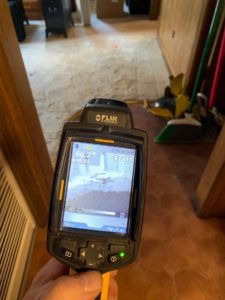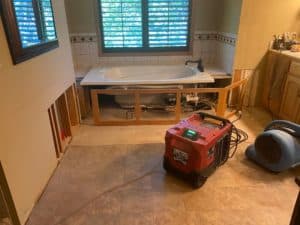Water Damage Restoration in Edina MN
Water Damage Restoration in St Louis Park MN
August 12, 2021Water Damage Restoration in Minnetonka MN
August 12, 2021 Professional Water Damage Cleanup Services
Professional Water Damage Cleanup Services
If you have any signs of water damage in your house or business you need to find local water damage restoration in Edina MN immediately. When water leaks or floods will not be addressed promptly, they can cause damage to your house. Unfortunately, water damage may sometimes go unnoticed for some time or perhaps appear to be a small issue. But in reality, water damage is actually a major issue that needs immediate action.
Irrespective of where the leak originates from, water can find its way into walls, ceilings, furniture, floors, and more. As well as the longer you place off water mitigation, water extraction, and water remediation, the greater the value of restoration, and the greater the probability of mold growth and permanent damage.
Should your house or business continues to be afflicted with flood damage, get in touch with an expert for water damage restoration in Edina MN and the surrounding areas.
How to proceed in case you have water damage?
When dealing with water damage, it’s an easy task to feel overwhelmed. However, there are several steps you can take to make certain the problem is resolved properly. Prompt action is however crucial as it could assist you to recover any financial losses that happen to be sustained through the damage.
1. Identify the original source of the problem, if at all possible
Corroded pipes, flooding, construction-related defects, broken fittings, excess humidity, and appliance malfunction could cause water damages. What might seem to be a small leak might be a symbol of a lot larger problem. In the event the damage seems minimal, it’s essential to act after you notice it.
Once you identify the matter that caused water damage in your property, make sure that you take good photos so that you can monitor the progress in the damage. Should you have any photos from the area prior to the water damage and mold, keep them safe at the same time.
In the event that you’re incapable of identify the cause from the leak, communicate with an expert to research the specific situation. More importantly, do something right after the leak is discovered to aid preserve your rights in your insurance plan, and also other remedies.
2. What if I have a homeowners’ association?
As soon as you identify the source of your leak or water damage, make contact with the party in charge of maintaining, building, or renovating your property. Most of the time, homeowners’ associations usually offer insurance covering water damage in common areas, or any damage due to pre-existing plumbing issues.
Be sure to keep a written record of the communication with the association. By doing this, in case they forget to provide access to the coverage that your particular insurance guarantees, it will probably be less complicated for you to file a compensation claim.
3. Notify the insurance policy carrier
Based on your insurance policy, you might be entitled to reimbursement for remediation and repairs. However, since most insurance plans can have certain restrictions, you ought to attempt to be as detailed as you possibly can when contacting your insurance company. Note the repair that they can and won’t cover to ensure that your coverage rights are very well protected.
4. Seek professional guidance with 24 to 48 hrs
Calling a water mitigation service to get the damage repaired or restored as promptly as is possible is vital.
Our water mitigation services usually include dehumanization, water extraction, and structural repairs for many affected materials. We inspect drywall, concrete, plaster, metal, wood, along with other building materials to check if they demand additional work.
 Are Flood Damage Repair Services Necessary?
Are Flood Damage Repair Services Necessary?
Our flood damage repair personnel get the necessary equipment and training to properly remove any flood water and sewage that might contain viruses or fecal matter. Our Edina services can be purchased 24/7, and that we respond promptly for any flood or water damage and mold emergencies. We can also help fix the harm before we start the restoration process.
Our flood restoration services feature the next:
•Water extraction
•Initial inspections
•Deodorization
•Cleaning structural elements and furnishings
•Mold remediation
•Drying by air movement or via de-humidification
Our flood damage repair services also have repairing or replacing structural elements like ruined drywall and rotten wood, together with the cleaning and protection or decorative or personal items.
When your office or home is flooded, make sure you call an experienced for water damage restoration in MN as soon as possible. Keep in mind that water damage and mold is constantly worsen the more time you fail to take action, and it’s likely how the flood water contains sewage, which may be a health hazard.
What’s Involved with Storm Damage Cleanup?
Element of our services is cleaning up your own home or commercial premises after severe storms or disasters like floods, monsoons, or hurricanes. In case you have storm damage, our technicians will work to acquire your way of life to normal fast. These are well trained and possess the right equipment to accomplish a comprehensive cleaning and repair job. This consists of removing standing water, cleaning, and disinfecting the house, drying out your home, and restoring it for the original condition.
Emergency Services for Water Damage
Our professional crew also can perform emergency repairs to make sure structural integrity which will help prevent further damages. From boarding up windows to structural repairs, our emergency repairs will assure that everybody remains safe and secure when conducting the restoration procedure.
We are always willing to rebuild, restore, and recover your property anytime or the 24 hours a day. Just give our 24-hour emergency response team a call.
Can Mold Exposure Result in Health Threats?
We offer professional mold remediation services, which is backed by decades of experience along with a team of highly trained and skilled professionals.
Mold is a fairly common problem in homes, particularly the older ones that have poor ventilation. Removing mold is simply part of the solution. The true secret to remediating mold, no matter what color, is identifying and addressing the cause of the problem and endeavoring to prevent it from coming back again. We may help you determine the precise reason behind the trouble, whether it is a leaking pipe or roof, or a failing HVAC system. Our goal is restoring your house to your safe and healthy spot for your and your loved ones.
Molds are living organisms (fungi) that are available in nearly every size, shape, and color. In most cases, mold usually needs three things to thrive: food, warmth, and moisture. That is why the key to prevention is controlling the level of moisture within a structure. Building materials can easily be afflicted with mold through direct experience of water or when exposed to elevated humidity levels.
Mold growth in the home is dangerous for several reasons. To begin with, when mold starts growing, it feeds in the materials that it must be growing on, which leads to irreversible damages. Secondly, mold usually releases tiny spores in to the air, which could irritate sinuses and respiratory systems, and cause illnesses. When breathed in, they can result in respiratory problems. In reality, black mold is amongst the most popular types of mold located in properties, and is responsible for many of these problems.
Regardless of the cause, remediating the mold problem promptly will help to minimize the extent of damage it might have at home.
 What are the Common Areas for Water Damage And Mold?
What are the Common Areas for Water Damage And Mold?
Around hot water heaters
Hot water heaters leak on a regular basis, which can be extremely true if they are old. In line with the dimensions of the tank, you might have a compact leak or a small flood.
Toilets
When toilets overflow, water that’s often packed with bacteria can rapidly flood the floor, seeping to the drywall and rugs around it.
Water Pipes
Leaky pipes are the most frequent reasons for water damage and mold. The scariest thing about the subject is the fact that most pipes are hidden, probably in basements, which often results in hidden water damage and mold until it’s noticeable through floors and walls.
Air Conditioning
So long as there isn’t any moisture around the drywall near the a/c unit, the moisture the appliance produces is not a problem. However, excessive dripping is normally enough to cause mold and water damage and mold.
Washing Machine
It comes with an average of 15 to 30 gallons of water that passes from the washing machine during each load. Older appliances usually have a higher chance of the pipes and hoses having leaks.
Refrigerator and Freezer
One of the appliances that often go unnoticed when water damage occurs may be the refrigerator. If you happen to suspect a leak, unplug the refrigerator, and inspect the wall behind the freezer to ascertain if there’s water damage.
Rain Gutters
External issues such as blocked gutters will also be cause of concern. Dirt, leaves, and sticks could cause running water to spill on the sides of your gutter, and lead to a nasty flood.
Showers and sinks
Showers and sinks are some of the most common factors behind water damage. Any moisture or condensation that might seep in the drywall or possibly a porous flooring could cause deterioration, discoloration, and mold growth.
Air Ducts
Finding mold or moisture inside the air ducts can be very problematic. These are hard-to-reach areas that allow for mold spores and debris to gather and also be transported to other areas of the home.
Siding
When water enters the corners of the house in which the two siding panels meet could deteriorate the plywood sheath.
Windows
These are typically a central source of water leakage in to the house. Rainwater can readily seep throughout the windows, causing water damage and mold.
Contact the Experts for Water Damage
Having your property returning to its original state following water damage might be a long and difficult process. However, through the help of an experienced water damage restoration company in Edina MN, it might be done promptly, plus your home or business can return working quickly. We service all Neighborhoods of Edina.
Helpful Websites in Edina MN
